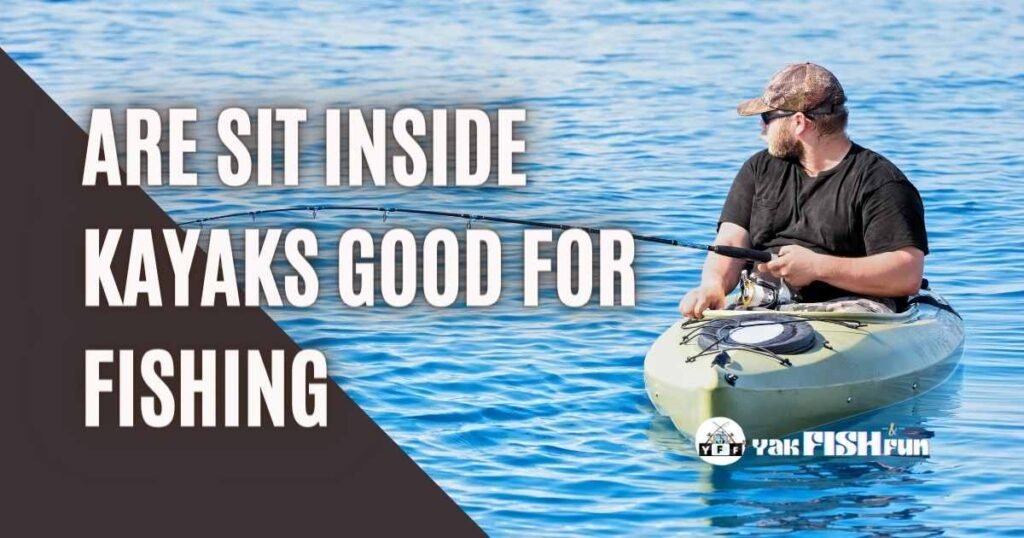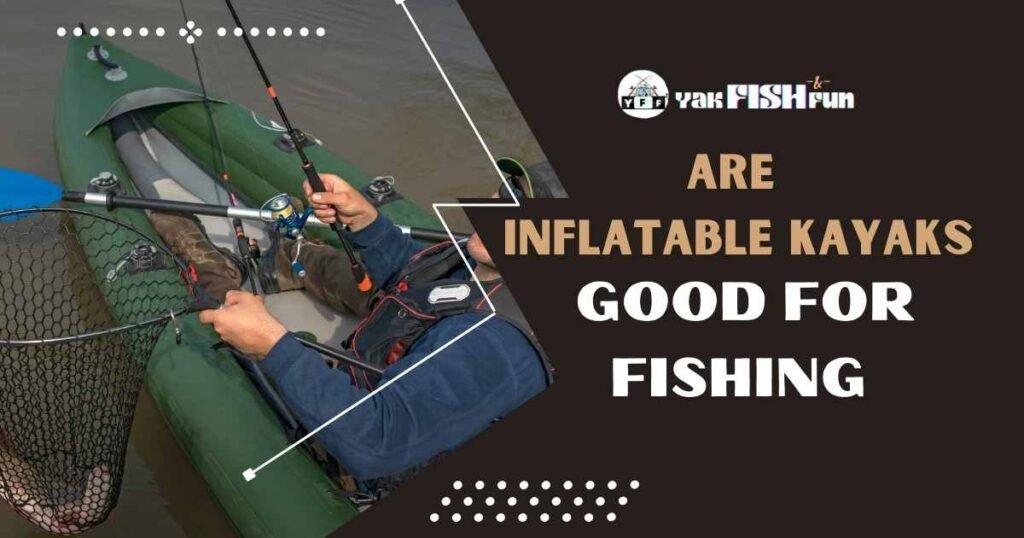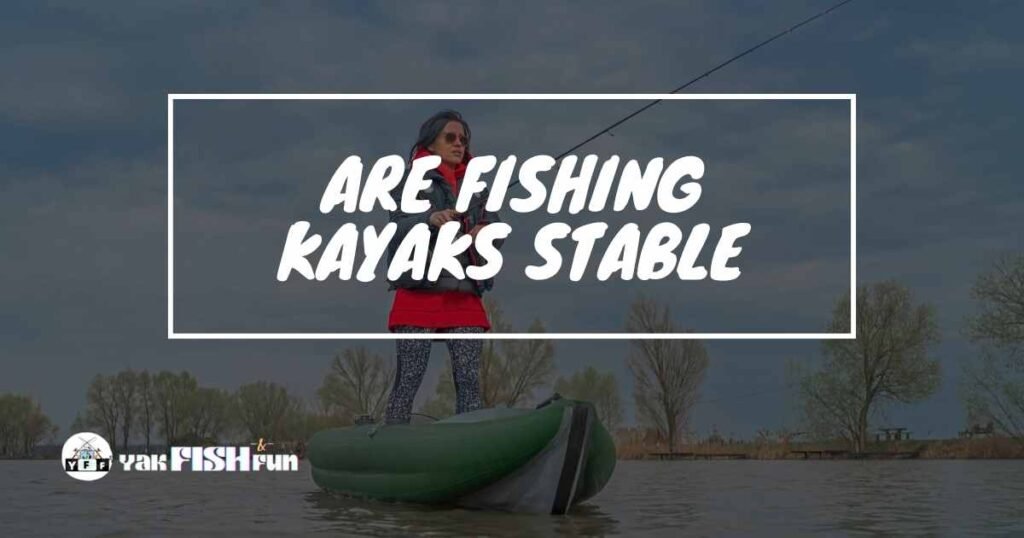Choosing the right kayak can make all the difference. Among the various options available, sit-in kayaks have gained popularity among anglers for their unique advantages.
Sit-in kayaks have a design where you sit inside a sort of cockpit. This helps keep you protected from things like wind, waves, and water splashing, making your time on the water more comfortable. These kayaks also feel more stable and easier to control when you’re fishing and moving around.
When you’re looking for a kayak for fishing, there are important things to think about, like how much stuff you can store in it, how much weight it can carry, and how easy it is to transport. Sit-in kayaks often do well in these areas. They have lots of storage space and can carry more weight than some other types of kayaks.
Sit-in kayaks are also pretty versatile. You can use them in different kinds of fishing spots, whether it’s a calm lake or choppier coastal waters. They can handle different conditions without losing their performance.
So, in this discussion, we’ll look at the main features, advantages, and disadvantages of sit-in kayaks for fishing to help you decide if they’re the right choice for you.
Table of Contents

Understanding Sit-In Kayaks For Fishing
Many people who love fishing really like sit-in kayaks. These kayaks are a favorite because they have a special design and useful features that are perfect for people who like to fish.
Related: Why Are Fishing Kayaks Sit On Top?
How Sit-In Kayaks Differ From Other Kayak Types
Sit-in kayaks are special because of how they’re built. Instead of sitting on top of the kayak like you would in other kayaks, you sit inside a closed area called the cockpit. Your legs are under a cover.
This design helps in a few ways when you’re fishing. First, it keeps you drier by blocking water splashes and waves. Second, it keeps you warm when it’s cold outside, so you can fish for a longer time without feeling uncomfortable.
Key Features and Design Elements of Sit-In Kayaks for Fishing
Sit-in kayaks designed for fishing come equipped with various features tailored to enhance your angling experience. These include:
- Ample Storage Space: Sit-in kayaks often have larger storage compartments compared to other kayak types. This allows you to carry all your essential gear, such as tackle boxes, extra rods, bait containers, and even camping equipment if desired.
- Rod Holders: Many sit-in kayaks have built-in rod holders strategically placed within easy reach of the paddler. These holders secure your rods while freeing your hands for paddling or handling fish.
- Stability: While not as inherently stable as wider sit-on-top models, modern sit-in kayaks offer excellent stability thanks to advancements in hull designs. Look for models with a wider beam or a pontoon-style hull to ensure stability while casting or reeling in your catch.
- Maneuverability: Sit-in kayaks are good at being easy to control, so you can move through narrow places and get to hidden fishing spots without much trouble. This is especially helpful when you’re fishing in rivers, streams, or small bodies of water.
Advantages and Disadvantages of Using a Sit-In Kayak for Fishing
When you want to enjoy the peacefulness of kayaking along with the excitement of fishing, sit-in kayaks are a special choice for people who love fishing. These kayaks are valuable because they are stable, keep you safe from the weather, and are easy to steer, making them great for fishing. But like any fishing option, sit-in kayaks have their own set of advantages and disadvantages.
Let’s explore it further.
Sit-in kayaks offer several advantages for anglers:
- Improved protection from the elements
- Better insulation in colder weather conditions
- Ample storage space for gear and equipment
- Built-in rod holders for convenience
- Enhanced maneuverability in narrow waterways
However, it’s important to consider the potential disadvantages as well:
- Limited mobility due to the enclosed cockpit design
- Slightly reduced stability compared to wider kayak types
- Potential difficulty re-entering the kayak if capsized
Choosing the Right Size and Weight Capacity for Your Sit-Inside Kayak
When selecting a sit-in kayak for fishing, choosing one that suits your size and weight requirements is crucial. Consider factors such as your body weight, height, gear weight, and any additional accessories you plan on bringing along. Opting for a higher-weight capacity kayak ensures stability and prevents overloading.
Setting Up A Sit In Kayak For Fishing
To get your sit-in kayak ready for fishing, you need to think about the important gear and equipment. You should also make sure everything is set up for your comfort, stability, and easy access. By arranging where you store your stuff and keeping the weight balanced correctly, you can make your fishing trip in a sit-in kayak the best it can be.
Essential Gear and Equipment
To begin setting up your fishing kayak, gathering the necessary gear and equipment is crucial. Here are some items you’ll need:
- Fishing Accessories: Carry essential fishing accessories such as rod holders, tackle boxes, fish finders, and anchor systems.
- Kayak Skirt: A kayak skirt helps keep water out of the cockpit while providing insulation in colder conditions.
- Fishing Gear: Pack appropriate fishing gear based on your preferences and targeted species. This may include various lures, hooks, lines, and nets.
- Safety Equipment: Make sure to keep safety in mind. You should have personal flotation devices (PFDs), a whistle or something to signal for help, a first aid kit, and a bilge pump on your kayak at all times.
Adjusting Seat and Footrests
Comfort is paramount during long hours of fishing. Adjusting the seat and footrests properly ensures ergonomic positioning for optimal performance:
- Seat Adjustment: Position the seat according to your height and leg length for maximum comfort. Ensure it provides adequate lumbar support.
- Footrest Adjustment: Adjust the footrests so that your legs are slightly bent when pressing against them. This position promotes stability during paddling strokes.
Organizing Storage Options
It’s important to organize your kayak storage properly so you can easily reach your fishing gear while keeping it safe:
- Deck Storage: Use bungee cords or straps on the deck to secure bigger items like coolers or crates with extra tackle boxes or bait containers.
- Hatch Compartments: Keep things that should stay dry, like electronics or personal stuff, in the waterproof hatch compartments.
- Tackle Storage: Use tackle trays or boxes made for kayak fishing to keep your gear organized and easy to get to.
Ensuring Proper Balance and Weight Distribution
Maintaining proper balance and weight distribution is vital for stability in the water. Consider the following tips:
- Weight Placement: Spread out the heavy stuff so it’s not all on one side. If it’s too lopsided, your kayak can become wobbly and unsteady.
- Center of Gravity: Keep your center of gravity low by placing heavier items closer to the kayak’s centerline. This helps prevent tipping and improves maneuverability.
- Water Conditions: If the water is rough and choppy, put more weight towards the back of the kayak. This helps you control it better. In calm water, try to balance the weight more evenly to keep your kayak steady.
Note: The information provided is general in nature; please consult manufacturer instructions or seek professional advice for specific kayak models.
7 Tips for Fishing with Sit-Inside Kayaks
Fishing from a sit-inside kayak offers a unique blend of tranquility and adventure, allowing anglers to access remote and serene fishing spots while enjoying the natural beauty of the water. However, this rewarding experience comes with its own set of considerations and techniques. Here are 7 tips for fishing with sit inside kayaks.
Selecting appropriate paddle strokes to maneuver effectively in a sit-in kayak
Mastering the right paddle strokes is crucial when fishing from a sit-inside kayak. To navigate efficiently, use a combination of forward, reverse, and sweep strokes. The forward stroke propels you forward, while the reverse stroke helps you slow down or move backward. The sweep stroke is handy for making sharp turns. Practice these techniques to enhance your maneuverability and easily reach your desired fishing spots.
Techniques to improve casting accuracy from a seated position
Fishing from a seated position in a sit-inside kayak requires adapting your casting technique. Begin by finding your balance and adjusting your body positioning for stability. When casting, aim for smooth and controlled motions to maintain accuracy. Consider using shorter rods that are easier to handle within the confined space of the kayak cockpit. Practice different casting styles, such as sidearm or underhand casts, to find what works best for you.
Strategies for navigating different water conditions while maintaining stability in a sit-inside kayak
Sit-inside kayaks provide excellent stability when properly handled, even in varying water conditions. When encountering choppy waters or waves, keep your center of gravity low by sitting closer to the floor of the kayak. This will help stabilize your vessel and prevent tipping over. Learn how to brace yourself against waves using techniques like edging or leaning into them at an angle.
Using anchor systems or drift socks to stay in prime fishing spots
To stay put in the best fishing spots and not float away, think about using special tools like anchors or drift socks made for kayaks. These things help you keep your sit-in kayak in one spot while you’re busy fishing. You can attach anchor systems to certain spots on your kayak, like cleats, and they’ll keep you steady even in water that’s moving.
Safety precautions specific to using a sit-inside kayak while angling
When you’re fishing from a sit-inside kayak, it can be a fun time, but you need to be safe:
Wear a Life Jacket: Always put on a life jacket, and make sure it fits right.
Learn Self-Rescue: Know how to save yourself if your kayak flips over. Learn things like the Eskimo roll or wet exit.
Watch the Weather and Water: Pay attention to the weather, water temperature, and be careful of things underwater or strong currents that could be dangerous.
Tips on how to handle fish catches while seated in your kayak
When reeling in a catch from your sit-inside kayak, handling the fish properly is important to minimize harm and maximize its chances of survival upon release. Use a landing net with rubberized mesh to avoid injuring the fish’s delicate scales or fins. If you plan on keeping the fish, use a stringer or live well within reach for safe storage until you return ashore.
Maximizing stealthiness by minimizing noise and disturbances
One advantage of fishing from a sit-inside kayak is the ability to approach fish quietly without disturbing them. Minimize noise by securing any loose items within your kayak using bungee cords or straps. Avoid sudden movements that could create splashes or vibrations in the water. Consider wearing polarized sunglasses to reduce glare and increase visibility beneath the surface.
Modifying A Sit In Kayak For Fishing
Using the correct gear can really improve your fishing time. While people usually like sit-on-top kayaks for fishing, you can also change a sit-inside kayak to work well for anglers. You just need to make a few changes and add some things to make your sit-inside kayak good for fishing.
Installing Additional Rod Holders, Fish Finders, or GPS Systems
First, you can improve your sit-in kayak for fishing by adding more rod holders. These holders let you bring multiple fishing rods, which increases your chances of catching fish. Whether you like baitcasting or spinning rods, having them within reach makes it easy to switch between different techniques.
Additionally, you can make your fishing experience even better by adding fish finders or GPS systems to your kayak. Fish finders help you find where the fish are by telling you about the water depth and what’s under the water. GPS systems help you mark good fishing spots and find your way in places you don’t know well. These gadgets can really enhance your time on the water.
Customizing Storage Solutions
Another important part of making your sit-in kayak better for fishing is organizing your storage. You’ll need tackle boxes or crates to keep your lures, hooks, lines, and other gear neat and easy to reach while you’re fishing. You can attach gear tracks or mounting points inside your kayak to keep these storage options secure.
You can also use scupper holes as extra storage spaces to make the most of the limited space in your sit-in kayak. These holes in the kayak’s deck can be used creatively by adding small containers or tubes to hold things like extra hooks, weights, or even snacks!
Enhancing Comfort with Padded Seats or Backrests
When you go fishing, you often sit in your kayak for a long time, waiting for the right catch. To make sure you’re comfortable during those long trips, think about improving your sit-in kayak’s seat.
Get a seat that’s cushioned and designed for fishing because it will give you good support and make you feel better. It’s also a good idea to invest in a high-quality seat that you can adjust to fit how you like it. This way, you can make sure you’re sitting just right when you’re casting your line or reeling in fish. And if you choose a seat with fabric that wicks away moisture, it will help keep you dry and comfy even when it’s humid outside.
Adding Stabilizers or Outriggers
Sit-in kayaks are usually pretty stable, but you can make them even more stable by adding stabilizers or outriggers. These things give your kayak extra floating power and stop it from tipping over if you move suddenly or if there are big waves.
Stabilizers or outriggers can look different. Some are like inflatable pontoons, and others are like strong arms that stick out from the sides of your kayak. They make your kayak more stable without making it harder to steer, which is great if you’re going into water that’s not very predictable.
Bottom Line
In conclusion, sit-in kayaks can be a good option for fishing enthusiasts. They offer a range of advantages, such as increased stability, protection from the elements, and ample storage space. Understanding how to set up and modify a sit-in kayak specifically for fishing purposes is crucial to maximizing its potential.


